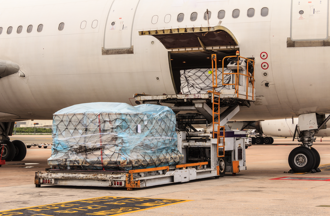The International Air Transport Association (IATA) reported that air cargo and cargo capacity have improved in the first month of the year, marking the 18th consecutive month of growth.
Based on its data, IATA said that total demand for air cargo, measured in cargo tonne-kilometers (CTK), increased by 3.2% compared to January 2024, marking the 18th consecutive month of growth. International operations saw a slightly higher increase of 3.6%.
Cargo capacity, measured in available cargo tonne-kilometers (ACTK), also rose by 6.8% year-on-year, with international capacity growing by 7.3%.
“While January marked the 18th month of consecutive growth, the 3.2% year-on-year increase represents a moderation from the double-digit peaks seen in 2024. Although yields remained above January 2024 levels, they saw a 9.9% decrease from December, while cargo load factors declined by an average of 1.5 percentage points,” said IATA’s Director General, Willie Walsh.
Walsh said that factors such as trade growth, declining fuel costs, and the continued expansion of e-commerce remain supportive for air cargo. However, it’s crucial to remain vigilant regarding market dynamics, particularly with potential tariff-driven trade policies from the US. Fortunately, the air cargo sector is highly resilient and experienced in adapting to shifts in the operating environment.”
Key factors for growth include growth in industrial production by 2.6% year-on-year increase in December 2024.
Global goods trade also expanded for the ninth consecutive month, rising by 3.3% in December.
IATA also cited the modest modest growth in Purchasing Managers’ Index (PMI) for global manufacturing output of 50.62 in January, indicating modest growth, while the PMI for new export orders remained just below the growth threshold at 49.37.
Another factor influencing growth is inflation. IATA said that in the US rose to 3.0% in January, up by 0.1 percentage point, while in Europe, it increased to 2.8%. In China, inflation rebounded to 0.5% after a steady decline in previous months.
In terms of regions, the January performance showed that Asia-Pacific airlines led with a 7.5% increase in air cargo demand, while capacity grew by 10.9% followed by North American carriers saw a 5.3% rise in demand, with capacity expanding by 7.5%.
European airlines experienced 1.3% growth in demand, with capacity increasing by 3.5%.
Middle Eastern carriers reported an 8.4% decrease in demand, the largest decline among regions, while capacity fell by 1.2%.
Latin American carriers recorded the strongest performance, with an 11.2% growth in demand, and capacity increased by 10.6%.
African airlines faced a 3.4% decline in demand, though capacity grew by 5.4%.
January 2025 saw growth across most international routes, driven by a surge in e-commerce demand, particularly between the US and Europe. This demand surge continues to outpace capacity limits in ocean shipping, benefiting air cargo carriers on key trade lanes.
As we move into 2025, air cargo continues to show resilience, though market conditions will require careful monitoring as external factors and shifting trade policies could impact future growth.




